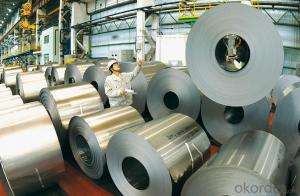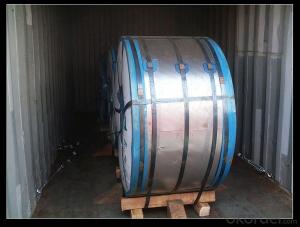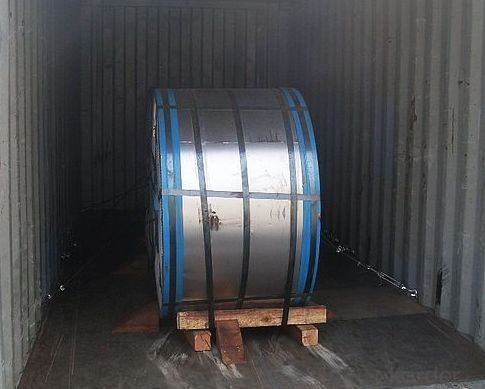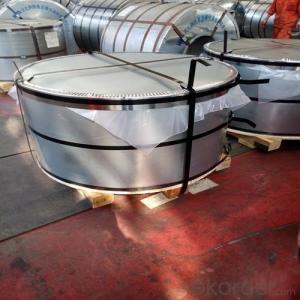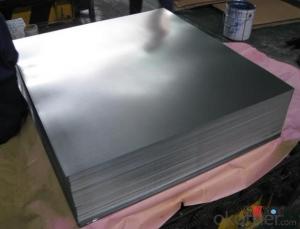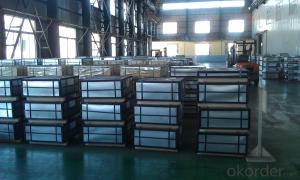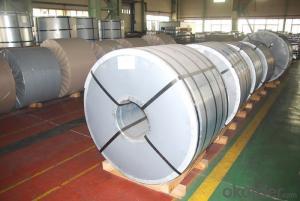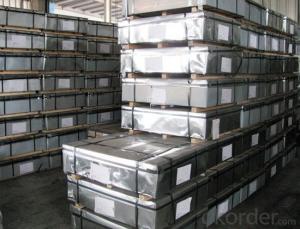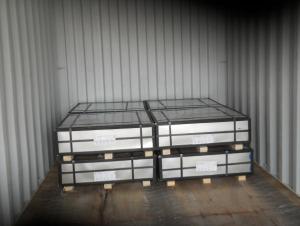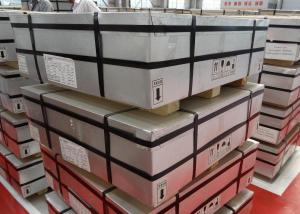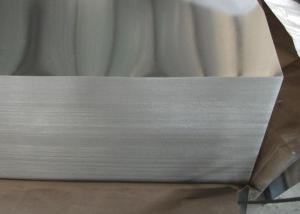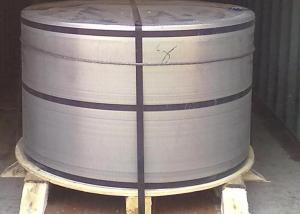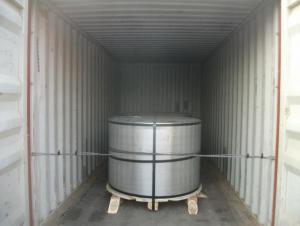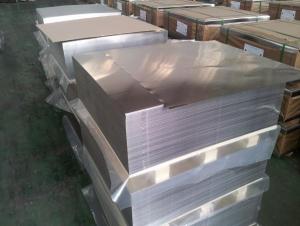Electrolytic Tinplate for Foods and Chemical Metal Packing
- Loading Port:
- Tianjin
- Payment Terms:
- TT OR LC
- Min Order Qty:
- 25 m.t.
- Supply Capability:
- 20000 m.t./month
OKorder Service Pledge
OKorder Financial Service
You Might Also Like
1.Structure of Electrolytic Tinplate for Foods and Chemical Metal Packing Description
Electrolytic Tin Plate Coils and Sheets for Foods Metal Packaging, is one thin steel sheet with a coating of tin applied by electrolytic deposition. Tinplate made by this process is essentially a sandwich in which the central core is strip steel. This core is cleaned in a pickling solution and then fed through tanks containing electrolyte, where tin is deposited on both sides. As the strip passes between high-frequency electric induction coils, it is heated so that the tin coating melts and flows to form a lustrous coat.
2.Main Features of the Electrolytic Tinplate for Foods and Chemical Metal Packing
Appearance – Electrolytic Tin Plate is characterized by its beautiful metallic luster. Products with various kinds of surface roughness are produced by selecting the surface finish of the substrate steel sheet.
Paintability and printability – Electrolytic Tin Plates have excellent paintability and printability. Printing is beautifully finished using various lacquers and inks.
Formability and strength – Electrolytic Tin Plates have got very good formability and strength. By selecting a proper temper grade, appropriate formability is obtained for different applications as well as the required strength after forming.
Corrosion resistance – Tinplate has got good corrosion resistance. By selecting a proper coating weight, appropriate corrosion resistance is obtained against container contents. Coated items should meet 24 hour 5 % salt spray requirement.
Solderability and weldability – Electrolytic Tin Plates can be joined both by soldering or welding. These properties of tinplate are used for making various types of cans.
Hygienic – Tin coating provides good and non toxic barrier properties to protect food products from impurities, bacteria, moisture, light and odours.
Safe – Tinplate being low weight and high strength makes food cans easy to ship and transport.
Eco friendly – Tinplate offers 100 % recyclability.
Tin is not good for low temperature applications since it changes structure and loses adhesion when exposed to temperatures below – 40 deg C.
3.Electrolytic Tinplate for Foods and Chemical Metal Packing Images
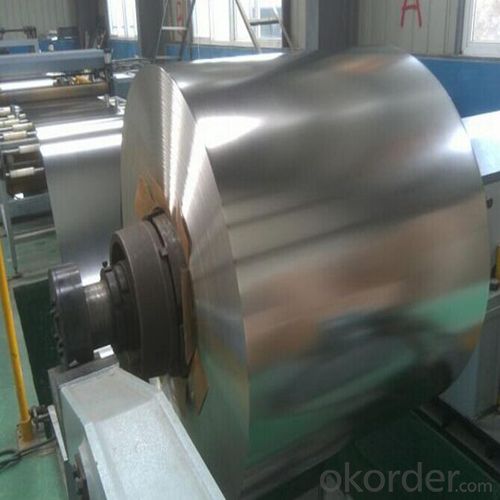
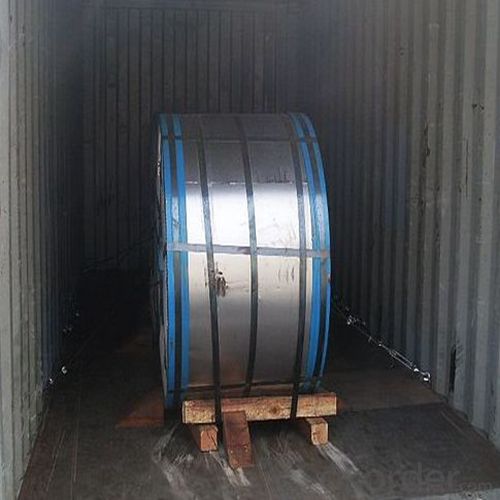
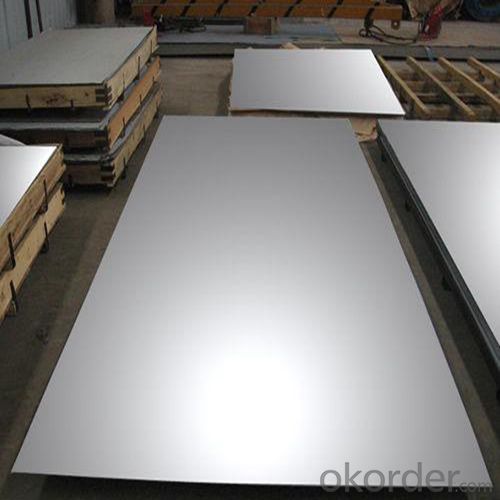
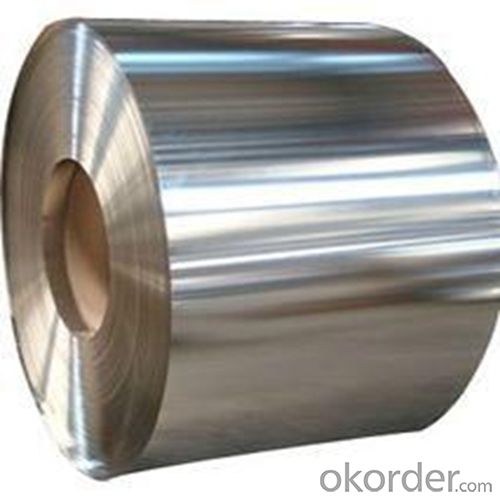
4.Electrolytic Tinplate for Foods and Chemical Metal Packing Specification
Standard | ISO 11949 -1995, GB/T2520-2000,JIS G3303,ASTM A623, BS EN 10202
|
Material | MR,SPCC |
Thickness | 0.15mm - 0.50mm |
Width | 600mm -1150mm |
Temper | T1-T5 |
Annealing | BA & CA |
Coil Inner Diameter | 508mm |
Weight | 6-10 tons/coil 1~1.7 tons/sheets bundle |
Passivation | 311 |
Oil | DOS |
Surface | Finish,bright,stone,matte,silver |
5.FAQ of Electrolytic Tinplate for Foods and Chemical Metal Packing
-How to place .an order or contact you ?
Please send us Email. we will give you a quick response in seconds .
- How is your quality ?
All our quality is prime even the secondary quality . We have many years experience
In this field with serious quality control standard . Advanced equipment, We welcome your visit to our factory .
- Q: What are the main applications of tinplate in the tobacco industry?
- Tinplate is commonly used in the tobacco industry for packaging cigarettes and other tobacco products. It provides a protective barrier against moisture, light, and oxygen, helping to preserve the quality and freshness of the tobacco. Tinplate also offers a visually appealing and durable packaging solution, contributing to the overall branding and marketing of tobacco products. Additionally, tinplate can be easily decorated or embossed, allowing for intricate designs and customization options that enhance product differentiation on store shelves.
- Q: What are the main applications of tinplate in the marine industry?
- Tinplate is commonly used in the marine industry for various applications such as manufacturing of cans for food and beverages, corrosion-resistant coatings for ship components, and protective packaging for marine equipment and supplies. Additionally, tinplate is also used for decorative purposes, such as in the production of marine-themed items and accessories.
- Q: Can tinplate be shielded?
- Two kinds of materials of tinplate and paktong in general: tinplate is cheaper, weldability is good, but easy to rust, and relatively soft, compared to a large shield narrow cover will have problems. Alpaka relatively high prices, the weldability is poor, but can provide performance through tin, relativelyhard. At present, the use of shielding in the mobile phone, these two materials are more, but taking into account the cost or priority of tinplate
- Q: What are the food safety regulations for tinplate packaging?
- The food safety regulations for tinplate packaging vary depending on the country and region. However, in general, tinplate packaging must meet certain standards to ensure the safety of the food inside. These standards typically include requirements for the quality of the tinplate material, such as being free from contaminants and durable enough to prevent leaks or damage. Additionally, regulations may cover aspects like the use of food-grade coatings on the tinplate, proper labeling and identification of the packaging, and compliance with hygiene and sanitation practices during the manufacturing process.
- Q: How does tinplate ensure the freshness of pet food?
- Tinplate ensures the freshness of pet food by providing a protective barrier that helps to preserve the quality and flavor of the food. It prevents air and moisture from seeping in, thereby minimizing the risk of spoilage and maintaining the nutritional value of the pet food for a longer period of time.
- Q: What are the main applications of tinplate in the stationery industry?
- Tinplate is commonly used in the stationery industry for various applications such as the production of pencil cases, pen holders, stationery boxes, and decorative containers. Its durability and resistance to corrosion make it an ideal material choice, ensuring the longevity of stationery products while providing an attractive and functional design. Additionally, tinplate can be easily customized with vibrant colors and intricate designs, enhancing the visual appeal of stationery items.
- Q: How does tinplate perform in terms of odor resistance?
- Tinplate generally performs well in terms of odor resistance due to its non-reactive nature and the protective coating of tin, which helps prevent any odors from permeating through the metal.
- Q: Can you tell me how to deal with the recycling of tinplate?
- General tinplate packaging waste, as long as the rust is not serious, can be converted into hardware products, to achieve the best use of materials. The consumption of tinplate in our country is relatively large (600 thousand tons / year), and 125 tons of tin packing waste can be recovered 1 tons of tin.
- Q: Can tinplate be formed into different shapes and sizes?
- Yes, tinplate can be formed into different shapes and sizes. It is a versatile material that can be easily molded and manipulated according to specific requirements.
- Q: What are the typical production volumes for tinplate?
- The typical production volumes for tinplate vary depending on the demand and market conditions, but it is estimated that global production of tinplate amounts to several million metric tons per year.
Send your message to us
Electrolytic Tinplate for Foods and Chemical Metal Packing
- Loading Port:
- Tianjin
- Payment Terms:
- TT OR LC
- Min Order Qty:
- 25 m.t.
- Supply Capability:
- 20000 m.t./month
OKorder Service Pledge
OKorder Financial Service
Similar products
Hot products
Hot Searches
Related keywords
